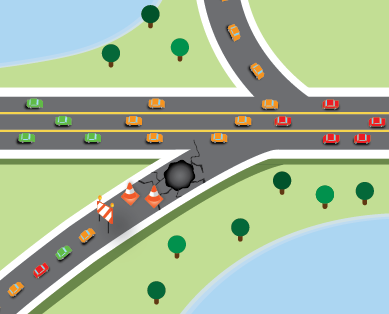Keeping the Lights On
PJM works with our members to ensure that the power is there when you need it 24 hours a day, 365 days a year. PJM is different from your local utility. PJM does not own power lines or generators. Instead, PJM directs the operation of the bulk power grid. View a list of comparisons to better understand the difference between PJM and your local utility.
Unlike the local distribution system (power lines you might see in your neighborhood), the bulk power grid carries massive amounts of power across great distances and can withstand challenges from extreme weather.
Think of the bulk power grid like an interstate highway: PJM monitors the highway but does not own or control the smaller, local roads that lead directly to your home or business. The local roads are like the power lines owned by your local utilities. An intense storm might cause a tree to fall on your street, knocking down a power line that could disrupt power to your home. The larger interstate highway system – or the bulk power grid, where interruptions are rare – stays open, keeping the flow of electricity moving across the large footprint even though some specific areas may experience temporary outages.

PJM computers perform “what if” scenarios all day long to assess conditions based on data from hundreds of thousands of points on the grid every four seconds. Power grid operators at PJM make real-time decisions that balance electricity supply and demand to keep the lights on across a 13-state region.